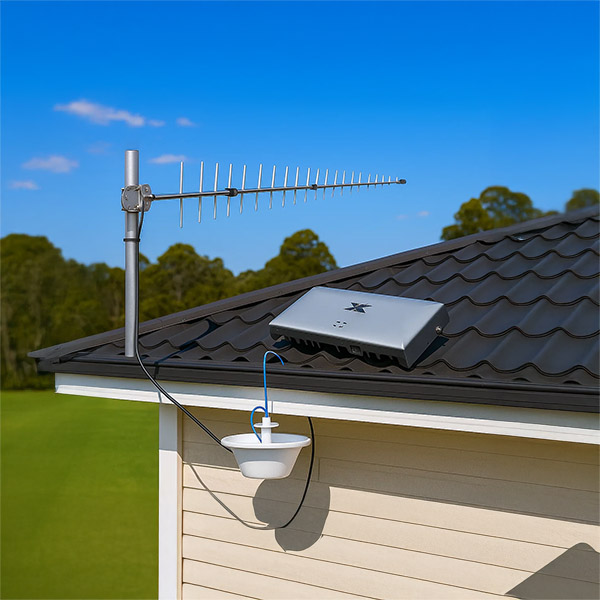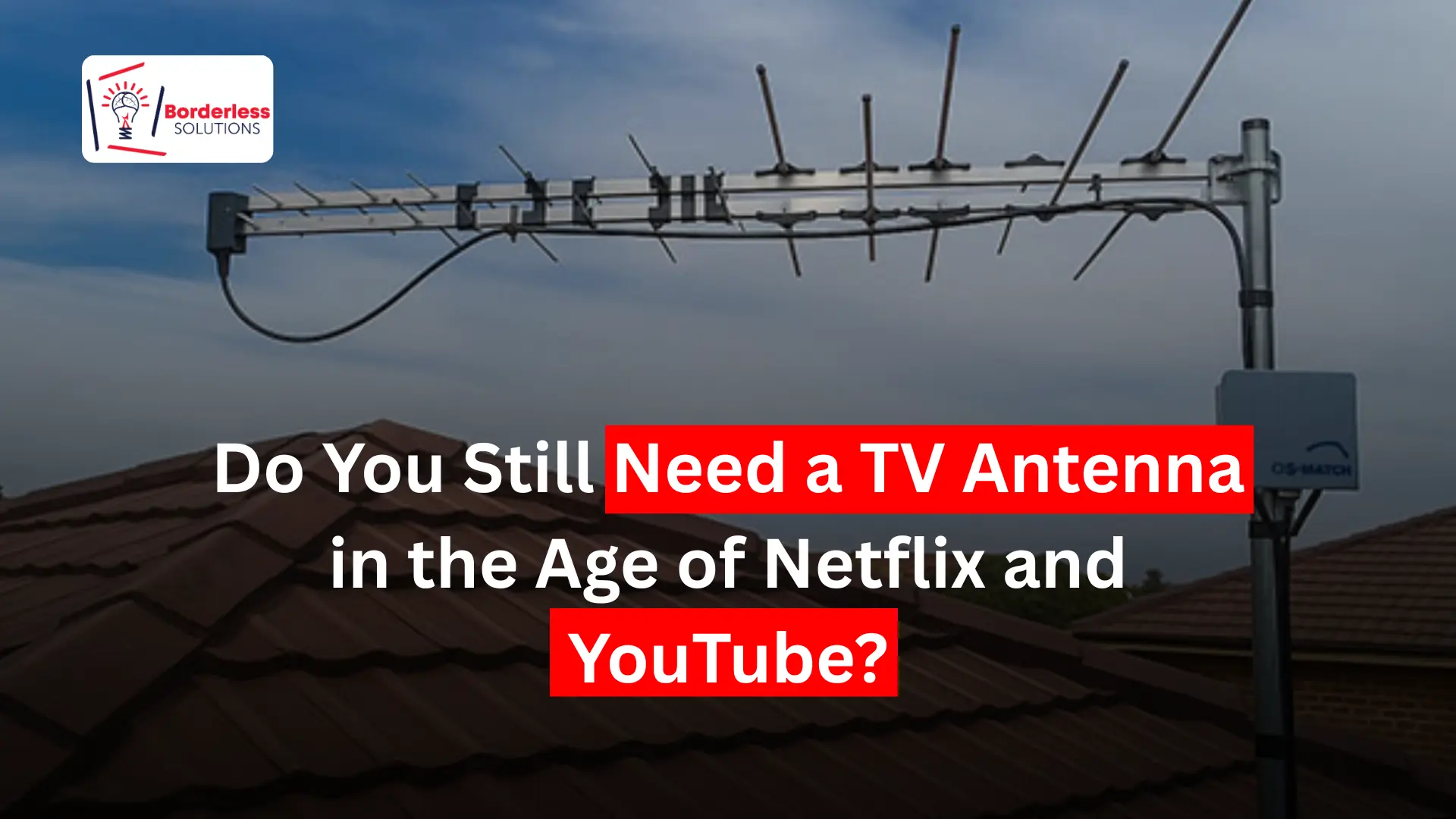Streaming dominates how we watch TV now. Netflix has more content than anyone could watch in a lifetime. YouTube keeps us scrolling for hours. But walk through any Australian suburb and you’ll spot antennas on rooftops and sitting behind flat screens. That’s not nostalgia. There’s real value in those old-school receivers, and it’s worth understanding what they offer.
The Streaming Revolution Didn’t Solve Everything
When people first cut their cable, it felt freeing. One streaming service replaced the expensive cable bill. It was simple, affordable, and perfect. Then things changed. Netflix had some shows, Hulu had others, Apple TV+ launched exclusive series, and sports moved behind paywalls on different platforms.
Now add up all those subscriptions—Stan, Binge, Disney+, Prime Video, Kayo, and more. The monthly cost can easily match or exceed what cable used to be. An antenna works differently: you buy it once, and that’s it. No renewals, no price increases, and no subscription emails.
Free-to-Air Broadcasting Still Delivers
Modern antennas pull in digital signals from Australian broadcasters. ABC, SBS, Seven, Nine, and 10 all transmit for free. Picture quality matches HD streaming, sometimes beats it. Your location determines how many channels come through—anywhere from 20 to over 40 stations. These aren’t grainy pictures from the 1980s. Digital broadcasting transformed the experience completely.
Live TV plays instantly, with no buffering or delays. Streaming services push content through your internet connection, which creates delays sometimes 30 seconds, sometimes several minutes. Watch a grand final or breaking news and that delay becomes frustrating.
Local stations broadcast community information that streaming can’t touch. Traffic reports for your actual commute. Weather for your suburb. News about your city council. That hyperlocal connection matters.
Streaming Comes With Hidden Expenses
Netflix and other streaming services charge monthly. Most Australian households pay for several at once, and streaming in HD or 4K uses a lot of internet data. If multiple people watch at the same time, you need a faster plan, which costs more. Data limits can also cause extra charges if you stream too much.
Content vanishes constantly from streaming libraries. Licensing deals expire. Shows disappear overnight. Movies rotate in and out. Your favorite series might not be there next month. Free-to-air schedules stay consistent.
Decision fatigue sets in when you scroll endlessly without finding anything appealing. Too many choices paralyze you. Sometimes turning on the TV and watching what’s already playing feels easier.
Antennas Serve Specific Viewers Well
Sports fans benefit enormously. The AFL Grand Final broadcasts free. State of Origin doesn’t require a subscription. International cricket, tennis, and rugby often air on network television. No streaming service needed. No pay TV bill.
News viewers get everything they need over the air. Morning programs, evening bulletins, breaking coverage all free. Switch between channels to compare perspectives without spending a dollar.
Budget watchers save the most money. An antenna eliminates subscription fees for broadcast content entirely. Add one streaming service for premium shows and you’ve built an affordable setup. The antenna portion never increases in price.
Rural internet struggles with streaming demands. Satellite connections cost more and impose strict data limits. Mobile data isn’t reliable enough for video. Antennas function regardless of internet quality. No bandwidth required. No data consumed.
Today’s Antennas Look Different
Forget those massive rooftop contraptions from decades past. Modern indoor antennas sit on bookshelves. Some mount flat like artwork. Others tuck completely behind your television. Setup takes five minutes. Plug the cable into your TV. Run a channel scan through the menu. Start watching without a technician appointment. No tools and no complexity whatsoever.
Range depends on your model and distance from towers. Indoor versions work within 30 miles. Outdoor models reach 60 miles or further. Amplified antennas boost weaker signals. Free online tools predict what channels you’ll receive at your address before you buy anything.
Picture quality surprises people. Broadcast signals aren’t compressed. Streaming services squeeze their video to save bandwidth, which degrades quality. The difference shows clearly on larger screens.

Combining Both Technologies Works Best
You’re not choosing one over the other. Smart viewers use both. The antenna handles free-to-air content. One or two streaming subscriptions cover exclusive programming. This combination maximizes value while minimizing monthly costs.
Recording capability expands your options. Some TVs record over-the-air broadcasts to USB drives. External DVR units like Tablo or HDHomeRun add pause, rewind, and scheduling features. No cloud DVR subscription required.
Smart TVs make switching seamless. The antenna appears as another input source. Jumping from Nine to Netflix takes one button press. The interface flows naturally between both.
Backup access matters during emergencies. The Internet goes down sometimes. Streaming services crash. When your connection fails during important news or a major event, your antenna keeps functioning. That reliability provides genuine peace of mind.
Live TV Streaming Services Cost Too Much
YouTube TV, Hulu + Live TV, and similar platforms offer broadcast channels through streaming. They’re recreating cable online. They compress signals. They require a strong internet. An antenna delivers those same networks for nothing. Picture quality exceeds compressed streaming. No internet needed and no monthly bill ever.
These streaming services make sense for cable channels only. ESPN, CNN, and HGTV don’t broadcast freely. If you want those specific channels, streaming them works. But paying monthly for ABC, SBS, Seven, Nine, or 10 when an antenna provides them free makes no financial sense.
Broadcasters Keep Investing in Free Television
ATSC 3.0 technology rolls out across the country now. This next-generation standard brings 4K resolution, better sound, and interactive features to free television. Broadcasters aren’t abandoning over-the-air transmission, they’re upgrading it.
Some predicted streaming would kill traditional broadcasting. That hasn’t happened. Broadcast networks reach entire communities instantly. During bushfires, floods, or other emergencies, broadcasts deliver critical information to everyone simultaneously. That public service role ensures broadcasting’s future.
Younger people might overlook antennas initially. Many discover them later as streaming costs climb and content scatters across platforms. The antenna market grows each year, not shrinks.
Networks adapt to changing habits. Most offer next-day streaming through their apps. But live viewing remains dominant for broadcast programming. Antennas support that pattern without requiring internet or subscriptions.
Choose What Fits Your Situation
Your viewing patterns determine what makes sense. Heavy network TV viewers need an antenna. Add one streaming service for exclusive content and you’re covered affordably.
People who exclusively watch streaming originals might not need an antenna. Most households fall somewhere between. They watch some broadcast programming, some streaming content, and benefit from having both available.
Location plays a big role. Urban and suburban areas receive strong signals from multiple towers. Rural locations might need outdoor antennas or receive fewer channels. Online signal maps show predicted reception for your exact address.
Cost heavily favors antennas. Even premium models cost less than two months of one streaming service. After that purchase, you pay nothing more. Ever. The savings compound dramatically over time.
Antennas Still Make Sense
TV antennas aren’t outdated technology. They’re practical tools that deliver real value alongside streaming. Free broadcast television provides content millions watch regularly. Accessing it without monthly fees makes obvious financial sense.
Streaming excels at on-demand viewing and exclusive shows. The convenience and variety appeal strongly. But streaming can’t replace everything broadcasting offers. Local news, live sports, and network programming remain free-to-air staples.
The real question isn’t antenna versus streaming. It’s whether combining both creates your best entertainment solution. For most people, it does. The hybrid approach delivers maximum content at minimum cost.
Antennas provide more than free channels. They offer reliability when the internet fails. They work independently of online infrastructure. They create peace of mind during outages. As entertainment grows more expensive and fragmented, the straightforward simplicity of over-the-air broadcasts becomes increasingly attractive.
Frequently Asked Questions
Will a TV antenna work with my smart TV?
Yes, all modern smart TVs have built-in tuners that work with antennas. Just connect the antenna, run a channel scan, and you’re ready to watch. Streaming apps and antenna channels work separately, so switching between them is easy.
How many channels can I expect to receive with an antenna?
It depends on your location and distance from broadcast towers. Urban areas may get 40–100 channels, suburban areas 20–60, and rural regions fewer. Tools like AntennaWeb and RabbitEars can estimate reception for your address.
Do I need the internet for a TV antenna to work?
No, TV antennas do not require the internet. They receive over-the-air signals directly from local stations. This makes them reliable during outages and ideal for areas with slow or limited internet.
Can I record shows from my antenna like I did with cable?
Yes, you can record over-the-air channels using TVs with USB recording or external DVRs like Tablo and HDHomeRun. These devices offer pause, rewind, and recording features. They also avoid the monthly fees common with cable DVRs.
What’s the difference between indoor and outdoor antennas?
Indoor antennas work best within about 30 miles of broadcast towers and are easy to set up. Outdoor antennas capture stronger signals from longer distances and avoid obstructions like walls. Choose based on how far you are from local towers and installation preference.

